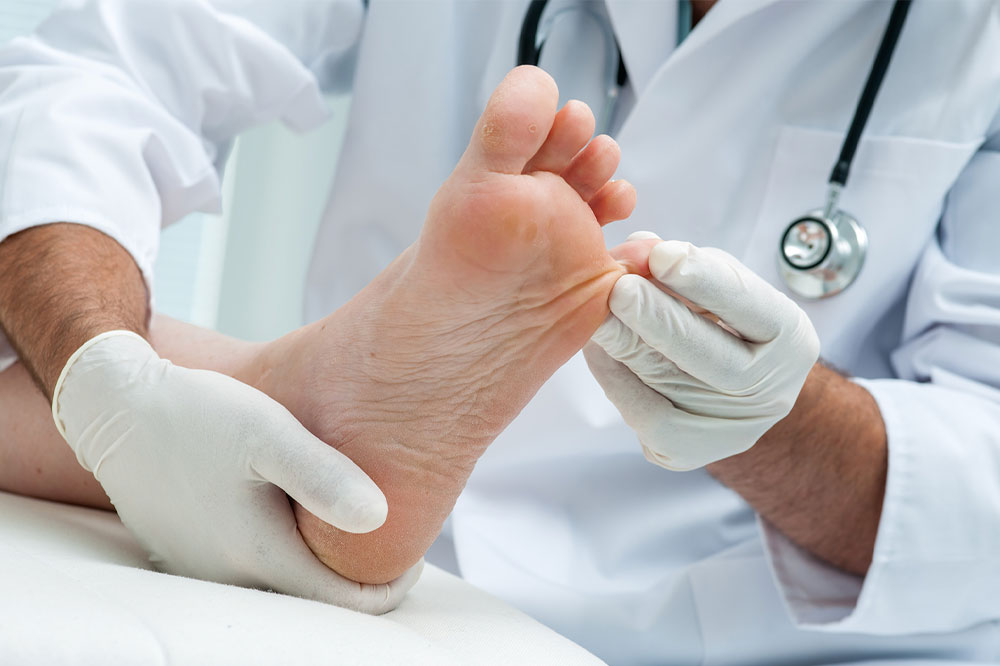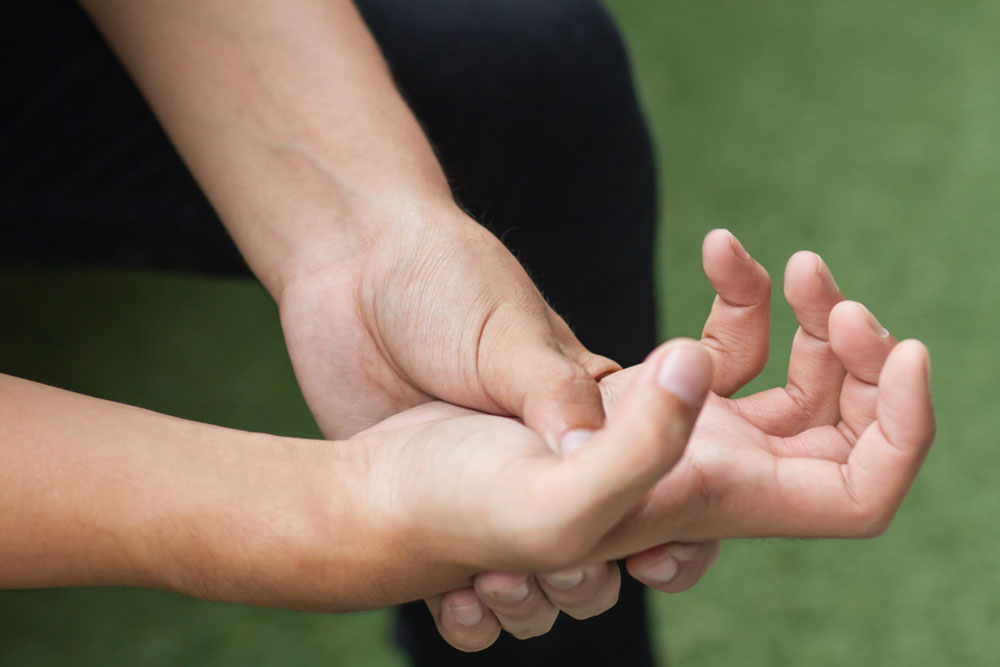Comprehensive Guide to Nail Psoriasis: Symptoms, Diagnosis, and Effective Treatment Options
Nail psoriasis is a chronic autoimmune condition impacting millions worldwide, characterized by discoloration, pits, and nail damage. Early recognition of symptoms, proper diagnosis, and customized treatment plans are essential for managing this condition effectively. While no definitive cure exists, a combination of at-home remedies, professional therapies, and lifestyle modifications can significantly improve quality of life. This comprehensive guide covers symptoms, diagnosis, home care tips, and advanced treatment options to help affected individuals understand and manage nail psoriasis proactively.

Comprehensive Guide to Nail Psoriasis: Symptoms, Diagnosis, and Effective Treatment Options
Nail psoriasis is a chronic autoimmune condition affecting millions worldwide. It is characterized by distinctive changes in fingernails and toenails that can lead to cosmetic concerns and functional impairments. Globally, it is estimated that more than 3% of adults, translating to approximately 7.5 million people, suffer from psoriasis, with a significant subset experiencing nail involvement. Those diagnosed with psoriatic arthritis are at higher risk of developing nail psoriasis, making awareness and management crucial. Despite being non-contagious, nail psoriasis can significantly impact an individual’s quality of life, influencing self-esteem, work productivity, and daily activities.
Understanding Nail Psoriasis
Nail psoriasis is a complex autoimmune disorder that affects the keratin-producing cells in the nails. It causes abnormal growth and accumulation of skin cells on and beneath the nails, resulting in visible signs such as discoloration, pitting, ridges, and crumbling. Unlike typical skin psoriasis, nail psoriasis targets the nails’ structure, leading to both aesthetic and functional issues. It results from the immune system mistakenly attacking healthy cells in the nail matrix and bed, which accelerates skin cell turnover. This rapid cell production results in the characteristic buildup of debris, thickening, and breakage.
While anyone can develop nail psoriasis, research indicates that individuals over the age of 40, particularly those with a history of psoriasis or psoriatic arthritis, are more vulnerable. Men tend to have a higher prevalence compared to women, likely due to genetic and environmental factors. A family history of psoriasis further increases susceptibility, highlighting the importance of genetic predisposition in the disease’s manifestation.
Recognizing the Signs and Symptoms
Healthy nails are typically smooth, pink, with a white crescent-shaped area at the base called the lunula. When affected by nail psoriasis, various physical changes emerge, which can be subtle initially but tend to worsen over time. It is essential to identify these signs early to prevent further damage and secondary infections.Common Indicators of Nail Psoriasis
Discoloration: Nails may develop white spots, yellowish, or brownish hues, with some showing red spots underneath the nail plate.
Fragility and Damage: Affected nails become fragile, crack, peel, or detach from the nail bed, causing discomfort and difficulty in daily tasks.
Subungual Debris and Bleeding: White or yellowish flakes, blood spots, or debris can accumulate beneath the nail plate, often taking months to clean out.
Nail Separation (Onycholysis): The nail begins to lift from its bed, creating gaps where bacteria and fungi can thrive.
Grooves and Pits: Horizontal ridges and tiny holes or pits appear on the surface of the nails, affecting their appearance and integrity.
Nail Thickening: Chronic inflammation and secondary infections can lead to thickened nails, which tend to break easily. Consulting a dermatologist is recommended if such symptoms are observed.
Diagnosing Nail Psoriasis
Healthcare professionals diagnose nail psoriasis primarily through detailed physical examinations and patient history. They may use the Nail Psoriasis Severity Index (NAPSI) as a tool to assess disease severity systematically across different parts of the nails. In some cases, skin biopsies or laboratory tests are conducted to rule out fungal infections or other conditions that mimic nail psoriasis, such as onychomycosis. Accurate diagnosis ensures appropriate management and prevents unnecessary treatments.
Managing Nail Psoriasis at Home
Although there is no permanent cure for nail psoriasis yet, various home remedies and lifestyle modifications can help alleviate symptoms and reduce flare-ups. It is vital to seek guidance from healthcare professionals before implementing new treatments, especially if you have allergies or unresolved infections.
Aloe Vera: Known for its natural anti-inflammatory and soothing properties, applying pure aloe vera gel multiple times daily, particularly before bedtime, can help calm irritated skin and nails.
Dead Sea Salts: Soaking the affected nails in warm water mixed with Dead Sea salts can relieve pain, reduce inflammation, and promote healing by drawing out toxins and softening the nails.
Capsaicin: Extracted from chili peppers, capsaicin creams may help reduce itching and inflammation when applied carefully, avoiding eye contact and sensitive areas.
Turmeric: This spice contains curcumin, which has potent anti-inflammatory and antifungal properties. Incorporating turmeric into your diet or applying turmeric paste topically may provide symptom relief.
Additional self-care tips include keeping nails dry and clean, moisturizing regularly, trimming nails to prevent breakage, and avoiding harsh chemicals, adhesives, or colored nail polishes during flare-ups to prevent further irritation and damage.
Therapeutic Interventions for Nail Psoriasis
Effective treatment usually combines various approaches tailored to the disease severity and patient preferences. A dermatologist can develop a personalized treatment plan that incorporates medications, lifestyle adjustments, and advanced therapies.
Topical Corticosteroids: Applying corticosteroid creams, ointments, or medicated nail polishes over 4-6 months can significantly reduce inflammation and slow disease progression.
Systemic Medications: Severe or persistent cases might require oral or injectable drugs, such as methotrexate or biologics, to modulate immune responses comprehensively.
Phototherapy: Controlled ultraviolet (UV) light treatments, including UVA and UVB therapy, can help suppress immune activity in the affected areas, leading to symptom improvement.
Laser Treatments: Pulsed dye lasers targeting abnormal blood vessels beneath the nails can mitigate inflammation and improve appearance, often performed in multiple sessions.
Regular follow-ups with a dermatologist ensure treatment efficacy and adjustments as needed, reducing the risk of complications and enhancing quality of life for patients with nail psoriasis.





